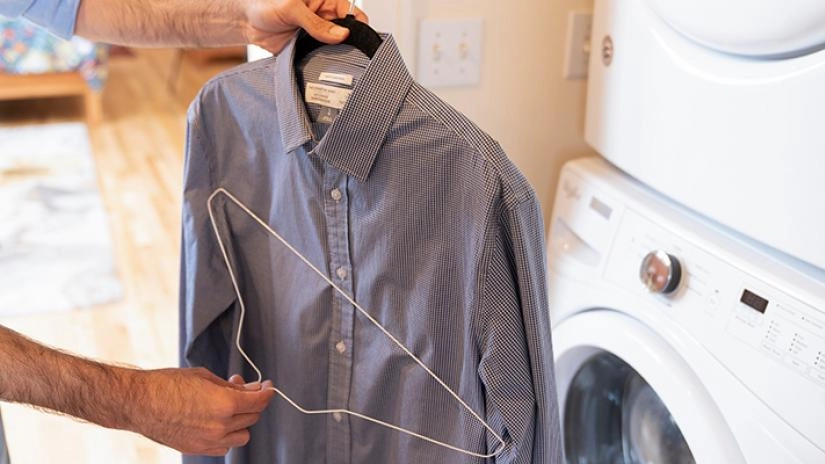Updated on 08/26/25

|
Mr. Electric explains effective ways to reduce static electricity at home.
|
A small shock from a doorknob. Clingy clothing. Hair that won’t stay put. While minor, these everyday annoyances often share a common culprit: static electricity. Understanding what causes static electricity and how to reduce it can help improve comfort and even protect electronics.
This guide explains the science behind static, why it's more common in certain seasons and environments, and several ways to remove static electricity from indoor spaces, clothes, and other surfaces — without the shock.
What Is Static Electricity?
Static electricity refers to an imbalance of electric charges on a surface. These charges build up and remain in place until they discharge, often when the object comes into contact with something conductive, such as a metal doorknob or your skin. That sudden transfer of electrons is what creates the familiar static “zap.”
Unlike the electricity that flows continuously through a home’s wiring, static electricity is temporary and localized. While it doesn’t pose a major safety hazard, it can be uncomfortable and disruptive in everyday life.
What Causes Static Electricity?
Static electricity is primarily caused by the triboelectric effect, a phenomenon that occurs when two different materials come into contact and then separate. As the materials rub against one another, electrons transfer from one surface to the other. This results in one object becoming positively charged and the other negatively charged.
Common examples include:
- Walking on carpet with socks
- Sliding into a car seat
- Removing clothes from a dryer
- Brushing hair with a plastic comb
In low-humidity environments, especially during colder months, these charges build up more easily and take longer to dissipate. This is why you may notice more static during seasonal changes.
How to Get Rid of Static Electricity
Reducing static in the home
Controlling the environment is the first step in reducing static buildup. Here are several ways to minimize unwanted charges indoors:
-
Add humidity. Dry air is one of the top causes of static buildup. When indoor humidity falls below 30%, static charges are more likely to accumulate.
- Use a humidifier to maintain indoor humidity between 40–60%.
- Add moisture-retaining houseplants to help stabilize levels naturally.
- Avoid overuse of central heating, which can dry out the air.
- Incorporate natural materials. Synthetics like polyester and nylon are more likely to accumulate static. Switching to materials such as cotton, leather, or wool — especially for upholstery, bedding, and clothing — can reduce friction and charge.
- Use anti-static sprays. Anti-static sprays are formulated to help remove static electricity from surfaces such as carpeting, furniture, and clothing. They can also help minimize charge buildup in workspaces where sensitive electronics are in use.
- Install anti-static mats. For offices, workshops, or electronics-heavy rooms, anti-static floor mats and desk pads can dissipate electrical charges before they affect sensitive equipment.
How to get rid of static in clothes
Clothing is one of the most common sources of static discomfort. These methods can help reduce static buildup in the laundry room and during daily wear:
- Use dryer sheets or wool dryer balls to reduce friction in the dryer.
- Avoid over-drying clothes. Removing all moisture increases the chance of static.
- Add white vinegar to the rinse cycle as a natural fabric softener and anti-static agent.
- Hang-dry synthetic fabrics to avoid static caused by machine tumbling.
- Gently rub a metal hanger the length of clothing before putting it on.
Applying a small amount of lotion or lightly misting clothing with water can also help in a pinch.
How to get rid of static in hair
Dry, fine hair is particularly prone to static buildup, especially in winter. Solutions include:
- Switching to a metal comb (these don’t retain a charge like plastic)
- Applying leave-in conditioner or a small amount of hair oil to reduce friction
- Using a humidifier in bedrooms and bathrooms
- Avoiding frequent use of heat-styling tools that can dry out the hair and scalp
How to get rid of static from electronics
While static electricity is usually a minor inconvenience, it can occasionally interfere with electronics. Follow these steps to protect your devices from static buildup:
- Use anti-static cloths to clean screens and keyboards.
- Avoid placing electronics directly on carpeted floors.
- Discharge static by touching a grounded metal object before handling sensitive components.
- Install antistatic mats in home offices or gaming areas.
When conducting electronic repairs or upgrades, it’s best to work in a static-free zone and use grounding wrist straps for additional protection.
Seasonal Tips to Prevent Static
Static is often more noticeable in fall and winter when indoor air is drier. However, it can be managed year-round with the right prevention strategies:
- Use a humidifier to keep moisture levels stable throughout seasonal changes.
- Avoid synthetic-heavy fabrics when layering in cold weather.
- Wear leather-soled shoes indoors to avoid charge accumulation on carpets.
- Moisturize skin regularly to reduce friction from clothing in dry winter conditions.
- Touch static-prone objects with a small metal object, such as a key or safety pin, to dispel charges.
These seasonal changes can significantly reduce the frequency and intensity of static shocks throughout the home during the dry, cold months.
When to Consult a Professional
While static electricity is typically harmless, frequent shocks when you plug in devices may indicate an underlying problem with your home’s wiring. If static buildup begins affecting devices consistently, schedule an electrical inspection.
Mr. Electric® provides trusted residential and commercial electrical services, including electrical safety evaluations and grounding system checks. A qualified professional can assess potential causes of static electricity and recommend solutions tailored to your space.
To learn more about protecting electronics, improving energy efficiency, or upgrading your electrical system, contact your local Mr. Electric team. Our licensed professionals are here to help with expert insight and dependable service.
This article is intended for general guidance only and is not applicable to every situation. You are responsible for determining the proper course of action for your property and situation. Mr. Electric is not responsible for any damages that occur as a result of advice and/or guidance derived from its blog content.
FAQs About Static Electricity
The safety of you, your family, and your home are the top priority of every Mr. Electric service professional. Our safety-first commitment to solving your electrical issues includes meticulous attention to detail on every job. Our commitment also includes using our years of experience to answer your questions. Below are answers to some of the most frequently asked questions about how to get rid of static electricity.
Can static electricity damage electronic devices?
Yes, static electricity can harm sensitive electronic components. Even a small electrostatic discharge (ESD) can cause malfunctions or permanent damage to devices like computers, smartphones, and televisions. To protect your electronics, consider using antistatic wrist straps or grounding mats in environments where static buildup is a concern.
Why is there more static in winter?
Low humidity levels, especially during winter, contribute to static electricity buildup. Dry air reduces the conductivity of materials, allowing charges to accumulate more easily. Increasing indoor humidity with humidifiers can help dissipate static charges and reduce the risk of shocks.
How do I stop my pet from shocking me?
Dry pet hair is a common source of static electricity. When you touch your pet, the built-up static charge quickly discharges, causing a shock. This is more common in low-humidity environments where the air doesn't allow the charge to dissipate easily.
To reduce these shocks, you can:
- Use a humidifier to increase moisture in the air, which helps prevent static buildup.
- Use an anti-static spray on your pet's fur.
- Regularly brush your pet to help remove buildup.
- Wear clothing made of natural fibers to reduce friction.
Do certain materials generate more static electricity?
Yes, synthetic materials,such as polyester, nylon, and acrylic, are more prone to generating static electricity due to their tendency to lose or gain electrons easily. Natural fibers such as cotton, wool, and leather are less likely to build up static charges. Choosing clothing and upholstery made from natural materials can help reduce static shocks in your home.
How can I stop getting shocked by my car?
These simple steps can help you avoid feeling that jolt when you get out of your car:
- Touch the car before stepping out. Before fully exiting, touch a metal part of the car (like the door frame) while still seated.
- Use a key or metal object. Hold a metal object (like your house key) and touch the metal door frame first. This allows the charge to transfer to the metal, preventing a shock.
- Use anti-static products. Consider using anti-static sprays or seat covers designed to reduce static buildup in your car.
- Wear natural fibers. Synthetic fabrics like polyester are more likely to accumulate static electricity. Wearing natural fibers like cotton can help reduce static shocks when exiting vehicles.

